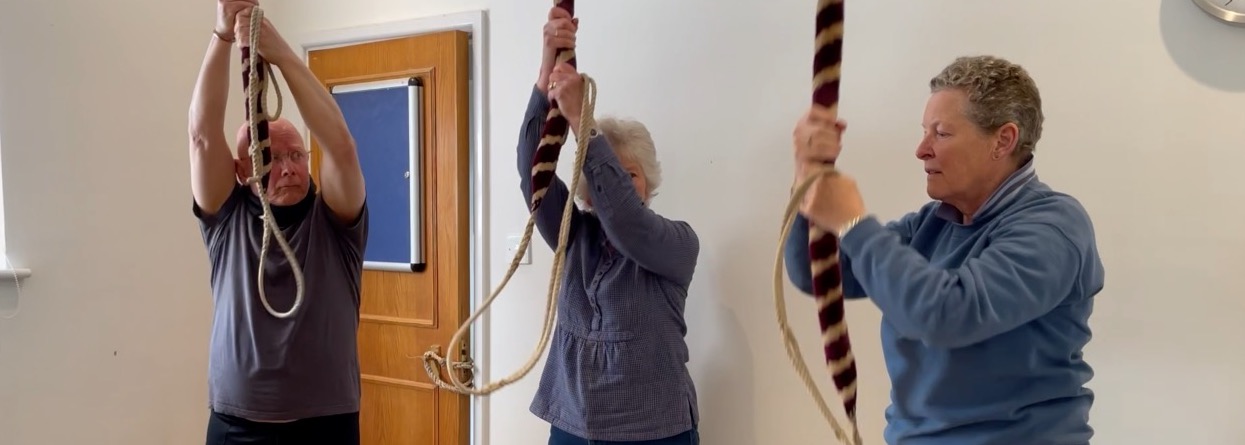It should take a maximum of 3 hours to complete but it is broken down into short chapters so you can do a little bit at a time. Do take the various quizzes as they will reinforce your learning and are fun to do.

- Teacher: Clare McArdle

It should take a maximum of 3 hours to complete but it is broken down into short chapters so you can do a little bit at a time. Do take the various quizzes as they will reinforce your learning and are fun to do.

Learn how to call bobs effectively and in the right place, and how to construct touches using all the calling options for Plain Bob Doubles.
Suitable for those who are competent at ringing touches of Plain Bob Doubles.

An introduction to the concepts and techniques involved in putting together short practice-night touches of spliced, from Plain and Little Bob Minor, through Spliced Surprise Minor, and finishing with examples of splicing the Core 7 Surprise Major.
This course assumes that you have experience of calling simple touches of Plain Bob> and that you have knowledge of a few Surprise Minor methods,ideally including London.

A
Module 2F refresher course for all ringing teachers. It's suitable for
both new and experienced teachers - after all, it's been a long time
since we've taught anyone and it's easy to forget some
of the finer details. This refresher takes about two hours
to complete, and whilst it can't possibly cover everything in the day
course in detail, there's plenty of reminders of the key points and skills.
This online course is only available to those who've already attended a Module 2 course. When enrolling we'll run a quick check, so you might have to wait a little while for the enrolment process to complete - you will be notified by email when it is.

This course is for all those who have attended ART's M1 module.
It's suitable for
both new and experienced teachers - after all, it's been a long time
since we've taught anyone to handle a bell and it's easy to forget some
of the finer details.
This course takes about one and a half hours
to complete, and whilst it can't possibly cover everything in the day
course in detail, there are plenty of reminders of the key points and
skills.
When enrolling you'll be asked to tell us where and (approximately) when you attended an M1 course. The ART Administrator will be check your details, so you might have to wait a little while before the enrolment process completes. You will be notified by email when this happens.

This is a progressive learning scheme to take you from Plain Bob to spliced Surprise Minor by learning over 40 methods. It is targeted at those who are learning methods in the virtual world, however it is just as applicable to learning on tower bells. It introduces concepts such as:
If that sounds a bit scary, it is designed to develop your method ringing in small steps and a certificates are awarded when you’ve completed each level. You will have earned them!

The place to explore the world of virtual ringing and the many different activities that hook fellow bell ringers into this addictive hobby.
The challenges cover simulator software, online ringing, handbells and the enigmatically named tail ends. When you’ve ticked off a challenge yourself, you can share your experience on the 50 Things Facebook group.
The scheme is targeted at those who are new to ringing in the virtual world, however, just like the original 50 Ringing Things, there will probably be competitions between experienced virtual ringers to see who will be the first to get their Gold certificate.
For you collectors out there (and there are one or two in bell ringing!) you will receive your 50 Ringing Things certificates when you’ve ticked off the right number of challenges. Remember, only challenges completed after registering on the scheme count!

Explains how to safely undertake basic belfry checks and maintenance, including how to safely work in the tower, undertake a risk assessment, check your belfry for any obvious issues and perform basic maintenance tasks such as replacing a stay.
Before undertaking any work in the tower, it's important to have completed a risk assessment which has been approved by your PCC.

Learn how to check and care for the ropes in your tower, and prevent and fix common problems.
Includes:
